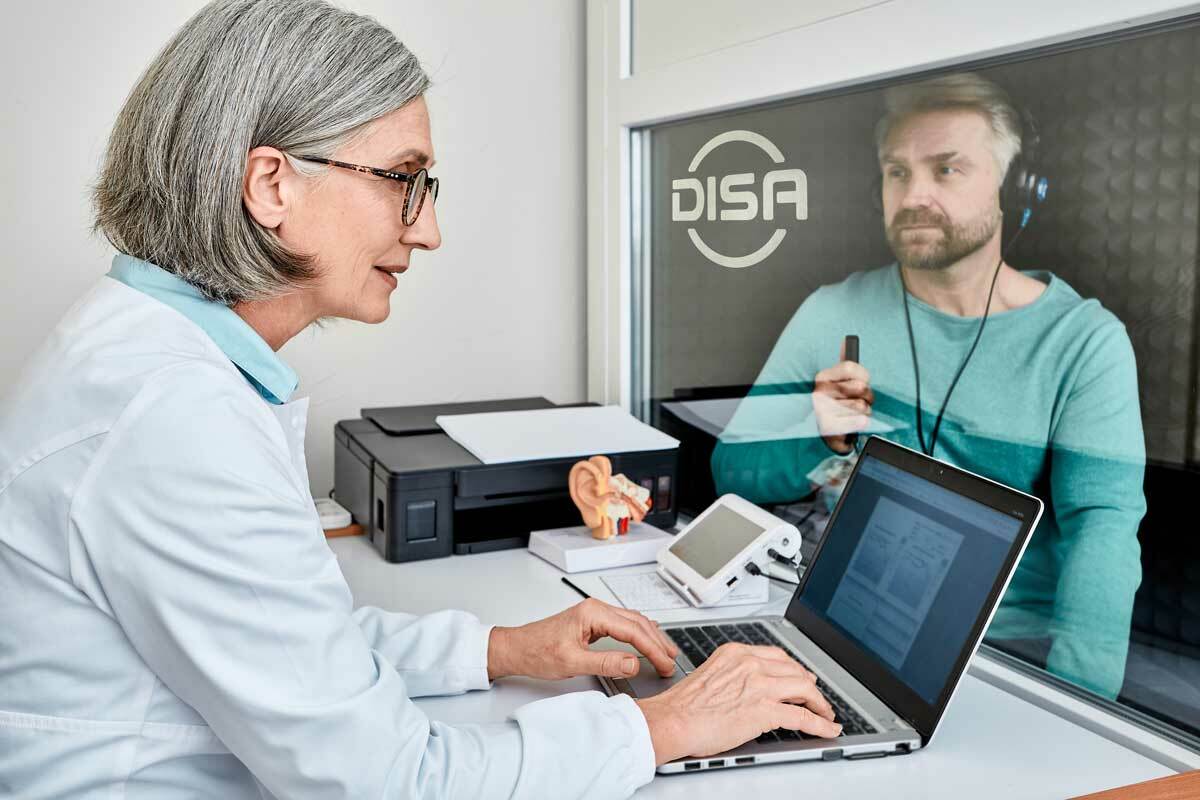Noise-induced hearing loss is a prevalent occupational health issue that affects millions of workers across various industries. In response to this, workplace hearing testing, commonly known as audiometric testing, has become a vital component of workplace safety programs. According to the U.S. Bureau of Labor Statistics, over 20,000 cases of workplace hearing loss occur each year, with many resulting in permanent damage. Ensuring that employees are protected from hazardous noise levels is not just a regulatory requirement but also a crucial step in promoting their overall well-being and job performance.
Employers play a key role in safeguarding their workers’ auditory health. One effective measure for preventing hearing loss is through regular audiometric testing. This preventive strategy offers numerous benefits to both employees and organizations alike.

What Does Audiometric Testing Involve?
Audiometric testing is a diagnostic procedure used to assess an individual's hearing ability across different sound frequencies. An audiometer measures the softest sounds that a person can detect at various pitches. During the test, the subject listens to a series of tones through headphones and indicates when they hear each sound.
The test results are presented on an audiogram, offering a detailed picture of the individual's hearing capacity. These results are instrumental in identifying hearing loss and customizing workplace hearing protection strategies accordingly.
1. Early Detection of Hearing Problems
One of the primary benefits of regular hearing tests in the workplace is their ability to catch hearing issues in their early stages. By conducting consistent assessments, employers can identify potential hearing loss before it becomes severe, allowing for timely interventions. This proactive approach helps prevent further deterioration, enabling employees to preserve their hearing and continue performing effectively. Early detection ensures that risks are minimized, and long-term damage is avoided, contributing to the overall well-being of the workforce.
2. Ensuring Compliance with Health and Safety Standards
Another important advantage of workplace hearing assessments is their role in helping businesses adhere to health and safety regulations, such as those enforced by OSHA. Many industries must meet strict noise exposure guidelines and provide regular hearing evaluations for employees working in noisy environments. By staying compliant with these regulations, employers avoid penalties and fines while reinforcing their commitment to workplace safety.
3. Creating a Safer Work Environment
Effective hearing is vital to ensuring workplace safety, particularly in environments where auditory cues—like alarms or verbal warnings—are essential. When an employee has hearing difficulties, they may struggle to recognize these signals, potentially putting themselves and others in harm's way. By regularly screening employees' hearing, companies can implement the appropriate safety measures, such as providing enhanced hearing protection or adjusting job responsibilities, thus reducing the risk of accidents and injuries.
4. Enhanced Communication and Productivity
Hearing loss can make communication difficult, leading to misunderstandings and errors, especially in jobs where precise communication is critical. By conducting regular hearing tests, employers can identify employees who may need accommodations, such as hearing aids or other support systems. Addressing these issues early can improve job performance and maintain productivity levels, ultimately benefiting the entire organization.
5. Financial Savings in the Long Term
Hearing loss in the workplace can have significant financial implications, such as increased absenteeism, reduced efficiency, and a greater risk of workplace accidents. These factors can be costly for employers. Regular hearing tests, coupled with appropriate interventions, can minimize these costs. Additionally, preventing hearing damage reduces healthcare expenses and occupational injury-related insurance claims, resulting in considerable long-term savings for companies.
6. Boosting Employee Engagement and Morale
When employees know their health and safety are a priority, it fosters a positive work culture and boosts morale. Providing regular hearing tests shows workers that their well-being is valued, which can lead to increased job satisfaction and loyalty. Employees who feel cared for are often more motivated and productive, contributing to lower turnover rates and a more engaged workforce overall.
How DISA Can Help
DISA Global Solutions recognizes that maintaining a safe and healthy workforce is crucial for any business, especially when it comes to preventing noise-induced hearing loss. With DISA’s comprehensive audiometric testing services, we help employers stay compliant with OSHA regulations while providing practical solutions to protect employees from harmful noise exposure.
DISA also provides a wide range of occupational health services tailored to support the specific needs of your business. From Audiograms to respirator fit testing, bloodwork and physicals, DISA’s suite of services ensures your employees are both safe and fit to perform their job duties effectively. By partnering with DISA, employers gain access to a trusted resource that helps them create safer, more compliant workplaces, empowering them to protect their workforce while maintaining operational efficiency.
Related Articles
Enhancing Healthcare: The Role of Ergonomics for Safety & Efficiency
Why You Should Titer Test Your Employees: Ensuring Workplace Safety and Compliance
Top 5 Benefits of Occupational Health and Safety Management Systems (OHSMS)
About DISA Global Solutions
Founded in 1986, DISA is the industry-leading provider of employee screening and compliance services. Headquartered in Houston, with more than 35 offices throughout North America and Europe, DISA’s comprehensive scope of services includes drug and alcohol testing, background screening, occupational health, and transportation compliance. DISA assists employers in making informed staffing decisions while building a culture of safety in their workplace.



